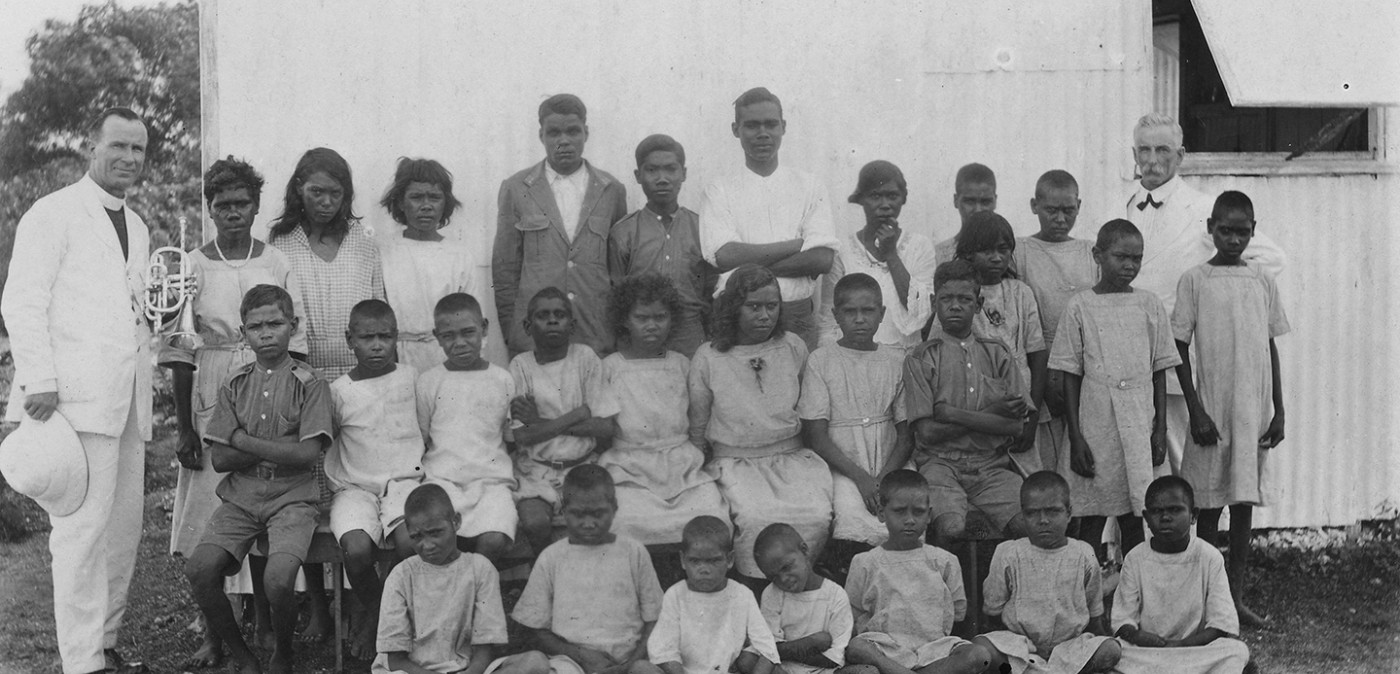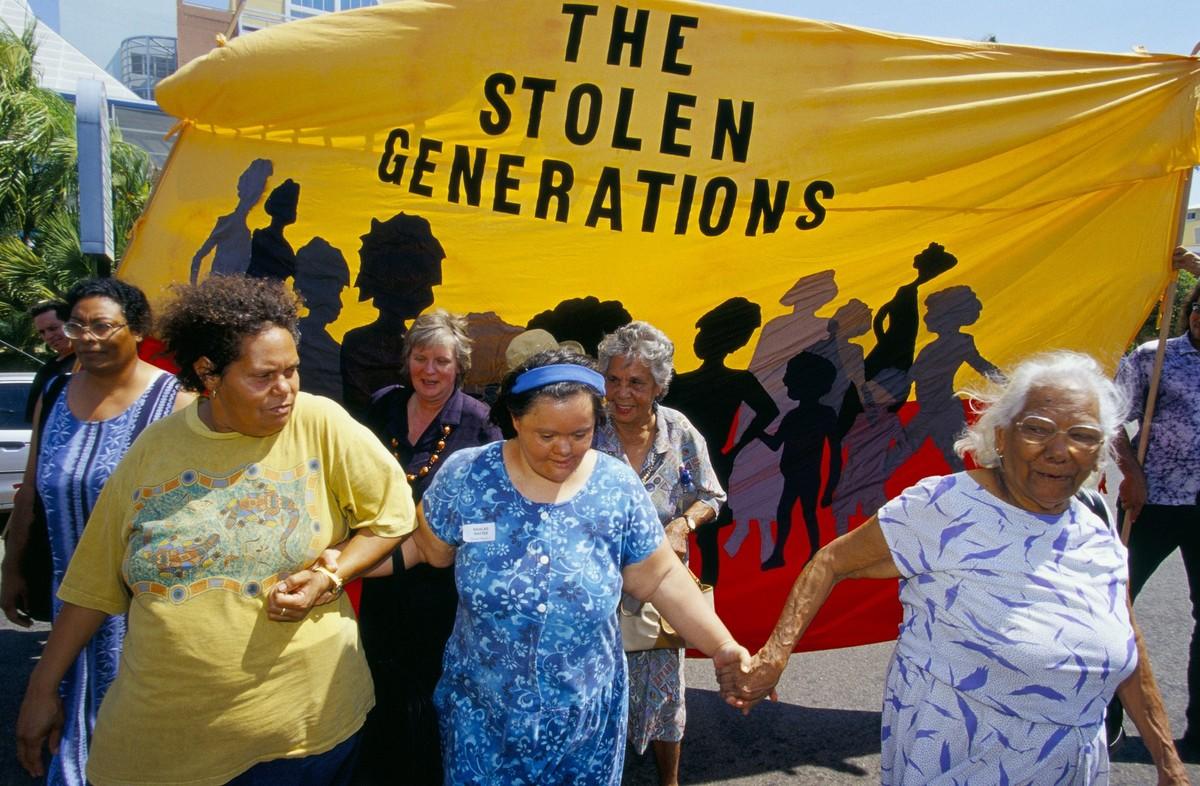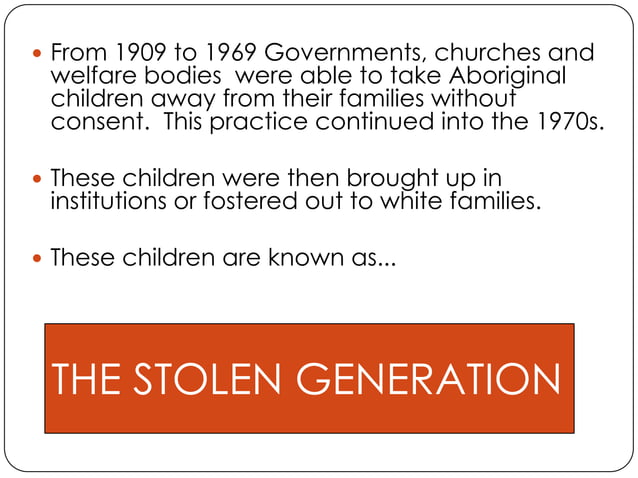The Stolen Generation: A Legacy of Trauma and a Long Road to Reconciliation
The Stolen Generation: A Legacy of Trauma and a Long Road to Reconciliation

The Stolen Generation, a term that encapsulates the tragic history of Aboriginal and Torres Strait Islander children forcibly removed from their families by the Australian government, remains a deeply painful and controversial chapter in the nation’s history. While the exact dates of this policy’s implementation vary depending on the region and specific legislation, the period between the late 19th century and the 1970s marks a significant era of forced removals. This article delves into the complex history of the Stolen Generation, examining the factors that led to its implementation, the devastating impact it had on individuals and communities, and the ongoing efforts towards reconciliation.
A History of Dispossession and Control
Related Articles: The Stolen Generation: A Legacy of Trauma and a Long Road to Reconciliation
- Unveiling The Vibrant Tapestry: The Meaning Behind Aboriginal Colours
- The Dreamtime: Ancestral Spirits, Creation Myths, And The Essence Of Aboriginal Religion
- Finding Your Way: The Power Of Sticks And Totems In Nature’s Spiritual Tapestry
- The Lingua Franca Of Australia: Exploring The Official Language And Its Rich Linguistic Landscape
- Embracing The Beauty Of Perth’s Native Flora: A Guide To The City’s Official And Beloved Plants
The forced removal of Aboriginal and Torres Strait Islander children was not a sudden event but rather a culmination of policies rooted in the colonial ideology of assimilation. This ideology, prevalent in the late 19th and early 20th centuries, aimed to "civilize" Indigenous populations by stripping them of their culture, language, and identity. The belief was that by removing Indigenous children from their families, they would be better integrated into white society and ultimately disappear as a distinct cultural group.
The Genesis of the Stolen Generation
The seeds of the Stolen Generation were sown in the early days of European settlement in Australia. From the 1770s onward, the British government implemented policies aimed at controlling and dispossessing Indigenous populations. These policies included:
- Land Seizure: The systematic dispossession of Indigenous land through land grants and other legal mechanisms.
- Disease and Violence: The introduction of European diseases and violence inflicted upon Indigenous communities led to significant population decline.
- Missionary Influence: Missionaries, while often well-intentioned, played a role in separating Indigenous children from their families, placing them in missions or orphanages.

The first formal legislation that directly addressed the removal of Indigenous children was the "Native Administration Act" of 1909 in Western Australia. This act granted the government the power to remove children from their families if they were deemed "neglected" or "unfit." Similar legislation was introduced in other states throughout the 20th century, solidifying the practice of forced removals.
The "Protection" Policy and the Rise of Assimilation
The "Protection" policy, implemented across Australia in the early 20th century, provided the legal framework for the removal of Indigenous children. This policy, ostensibly aimed at protecting Indigenous people from exploitation and assimilation, was used to justify the removal of children from their families and communities. The government, under the guise of "protection," assumed control over Indigenous lives, including their education, health, and employment.
The "Protection" policy, however, was inherently discriminatory and based on racist assumptions about Indigenous people’s capacity to care for their own children. It led to the separation of families, the loss of cultural knowledge, and the erosion of Indigenous identity.
The Peak of the Stolen Generation

The period between the 1930s and the 1970s witnessed the peak of the Stolen Generation. During this time, tens of thousands of children were removed from their families and placed in institutions, foster homes, or adopted by non-Indigenous families. The government, under the auspices of assimilation, aimed to "breed out" Indigenous culture and create a society where Indigenous people were indistinguishable from their white counterparts.
The Impact of the Stolen Generation
The impact of the Stolen Generation on individuals and communities has been profound and enduring. The forced removal of children resulted in:
- Loss of Identity: The removal of children from their families and communities severed their connection to their culture, language, and heritage. Many were raised in environments where their Indigenous identity was actively suppressed.
- Trauma and Abuse: Many children in government care suffered from physical, emotional, and sexual abuse. The trauma experienced during this period has had long-lasting effects on their mental and emotional well-being.
- Generational Trauma: The impact of the Stolen Generation has extended beyond the individuals directly affected. The trauma and loss experienced by those who were removed have been passed down through generations, impacting family dynamics and community cohesion.
- Loss of Cultural Knowledge: The removal of children from their families and communities led to the loss of valuable cultural knowledge, traditions, and languages. This has had a significant impact on the preservation and transmission of Indigenous culture.

The Fight for Recognition and Justice
The Stolen Generation has been a source of deep pain and anger for Indigenous Australians. The fight for recognition and justice for the Stolen Generation began in the 1970s with the emergence of Indigenous activism and the establishment of organizations such as the Aboriginal Legal Service.
The Bringing Them Home Report
A pivotal moment in the fight for recognition came in 1997 with the publication of the "Bringing Them Home" report. This report, the culmination of a national inquiry into the Stolen Generation, documented the devastating impact of forced removals on individuals and communities. The report made 54 recommendations, including a national apology, compensation, and support services for Stolen Generation survivors.
The National Apology
In 2008, the Australian government issued a formal apology to the Stolen Generation. The apology, delivered by then Prime Minister Kevin Rudd, acknowledged the profound injustice inflicted on Indigenous Australians and expressed deep remorse for the actions of the past. While the apology was widely welcomed, it was also recognized as just the first step in a long process of reconciliation.
Ongoing Efforts Towards Reconciliation
The legacy of the Stolen Generation continues to shape Australia’s social and political landscape. The government, in partnership with Indigenous communities, is working to address the ongoing impacts of the Stolen Generation through:
- Support Services: Providing support services for Stolen Generation survivors, including counseling, health services, and cultural support.
- Cultural Preservation: Investing in programs aimed at preserving and revitalizing Indigenous languages and cultures.
- Truth-Telling: Initiating truth-telling processes to document the history of the Stolen Generation and ensure that the stories of survivors are heard and remembered.
- Reconciliation: Promoting reconciliation between Indigenous and non-Indigenous Australians through education, dialogue, and cultural exchange.
The Path Forward
The Stolen Generation remains a deeply painful chapter in Australia’s history. However, the fight for recognition and justice has paved the way for a more just and equitable future for Indigenous Australians. The journey towards reconciliation is ongoing, and it requires continued commitment from all Australians to listen to the voices of Stolen Generation survivors, acknowledge the injustices of the past, and work towards a future where Indigenous Australians are fully respected and empowered.
FAQ: When Was the Stolen Generation Proposed in Australia?
Q: What are the exact dates of the Stolen Generation in Australia?
A: There is no single definitive date for the Stolen Generation, as it was a complex and evolving policy implemented over several decades. The period from the late 19th century to the 1970s is generally considered the era of forced removals.
Q: When was the first legislation passed in Australia that allowed for the removal of Indigenous children?
A: The first formal legislation that specifically addressed the removal of Indigenous children was the "Native Administration Act" of 1909 in Western Australia. However, various policies and practices leading to the separation of Indigenous children from their families were in place before this legislation.
Q: When was the "Protection" policy implemented in Australia?
A: The "Protection" policy was implemented across Australia in the early 20th century, with variations in implementation across different states and territories.
Q: When did the Stolen Generation reach its peak?
A: The period between the 1930s and the 1970s is widely considered the peak of the Stolen Generation, with the highest number of children being removed from their families during this time.
Q: When was the "Bringing Them Home" report published?
A: The "Bringing Them Home" report, the culmination of a national inquiry into the Stolen Generation, was published in 1997.
Q: When did the Australian government issue a formal apology to the Stolen Generation?
A: The Australian government issued a formal apology to the Stolen Generation in 2008, delivered by then Prime Minister Kevin Rudd.

Closure
Thus, we hope this article has provided valuable insights into The Stolen Generation: A Legacy of Trauma and a Long Road to Reconciliation. We hope you find this article informative and beneficial. See you in our next article!


